Korean War GB: Lockheed T-33A – Hobbycraft 1/48
This article is part of a series:
While browsing the LHS a few months back, I came across two Hobbycraft T-33A's. One was a later variant with the integrated wing fuel tanks, but the other was an early version with the drop tanks hung below the wings, just like an F-80. In addition, the earlier kit's boxing was a HC black box, known to have better decals, and to top that, it was still sealed! This one was a no-brainer, as it would be fit to build for the Korean War GB.
I ended up bringing both T-33's home, bearing in mind that I could build these right along side my previously started Monogram F-80, and save time... ironworks style! Long story short, I got so far as getting them all together and mostly ready for primer, when the F-80 and the later T-33 just fizzled. I'll come back to them soon, but for now you came here to see a Korean War T-33! Unfortunately, so far as the GB goes, I have had very little time to model these past few months, and as such, I was unable to make a work in progress thread. I wish I could have shared the progress, but alas, I'd only be half way done by this point... now, onward!
The Hobbycraft (later Academy) T-33 is a fairly simple and cost effective kit for anyone looking to build a T-33. The kit itself lacks a lot of detail, especially in the cockpit. The fuselage has nice, restrained panels lines, and some rivet detail here and there as appropriate. Other lacking details are the main landing gear bays, and the lack of posable airbrakes (like the Monogram F-80). Other than that, the kit can be made presentable with fairly little effort.
Because I couldn't leave well enough alone (and because I had a spare parts Monogram F-80 laying around), I decided to use some accessories from an F-80 to dress up the T-33. Cheif among these were the landing gear bays, landing gear legs, wheels, flaps, and drop tanks. None of these fit exactly and all required some retrofitting to make work, but in all cases the Monogram parts had better details.
For paint... well, for paint I can't really describe what I did, as I came back to it over an over, with multiple different techniques, each time something new, and all layered on top of each other. It started as a smoothed down Mr 1500 black primer (my new favorite, durable as heck). On top of that I sprayed Vallejo Chrome, but from there I used probably 5 more shades of aluminum from Vallejo, some applied with airbrush and no masking, and others applied with sponge or cotton bud. I was trying to go after the mottled and inconsistent sheen of a worn aluminum finish. I like the way it turned out, but how well it shows what I intended really depends on the lighting, which I've tried to adjust in the pictures posted. If anyone is interested in more of the technique, feel free to message me. The usual X-22 and X-35 were used before and after decals. The kit decals went down just fine, and yellow fuselage stripe was painted on, as you can probably tell by the unevenness of it. There are some imperfections in the paint, but part of my modelling mojo is to recognize that the real aircraft had numerous defects, even (especially) the almighty NMF.
Overall the kit was a pretty fun build, and a lesser seen variant of the T-Bird. The aircraft itself was assigned to the 51st FIW. I could not find any pictures of the aircraft, but surely this aircraft played second fiddle to the F-86's flown in the 51st. Anyhow, I like that this is another trainer aircraft, armed up with MGs and ordinance. I originally planned to add some HVARs to the lower wing (hence the holes), but just have not painted them or prepped them.. perhaps later on...
I hope you like it, despite me just realizing that I forgot to paint the wingtip lights..! 🙂
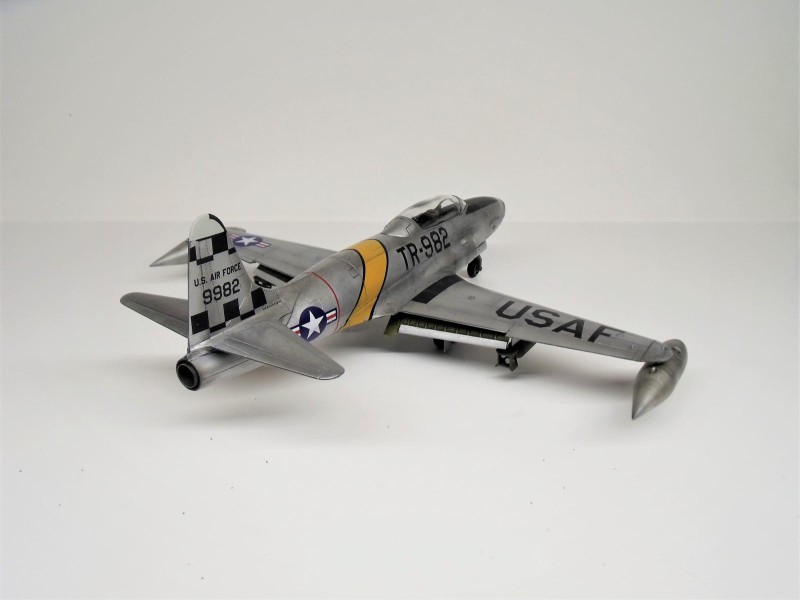

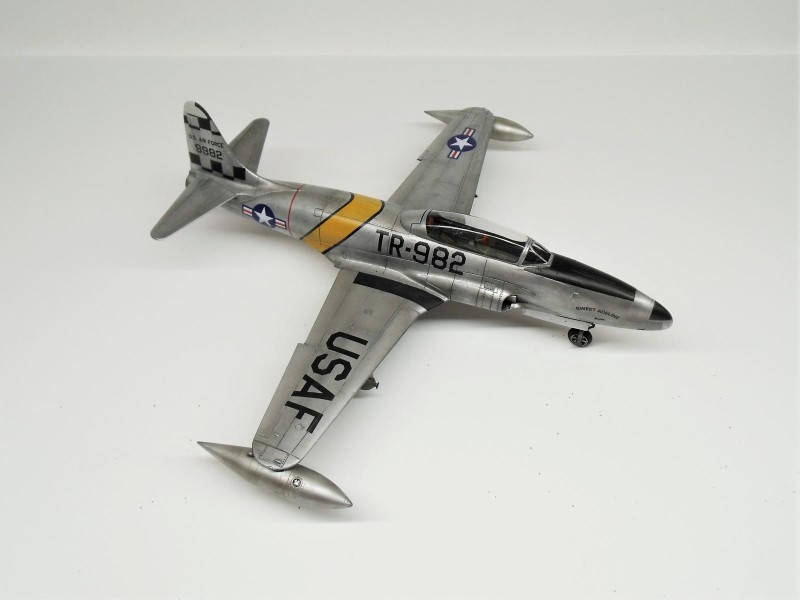
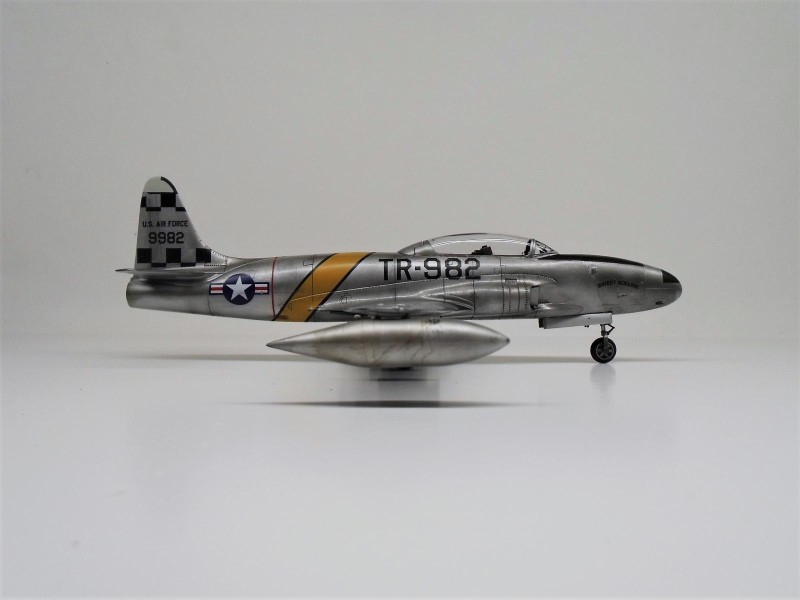
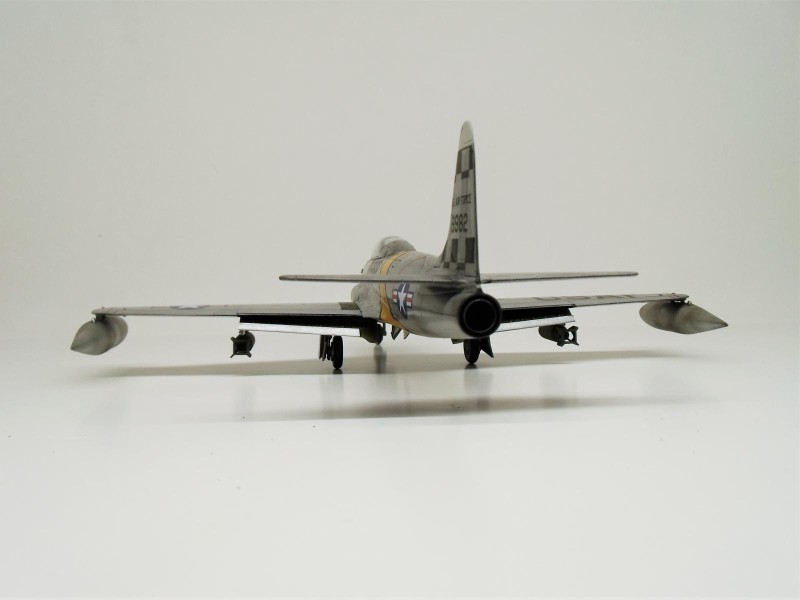
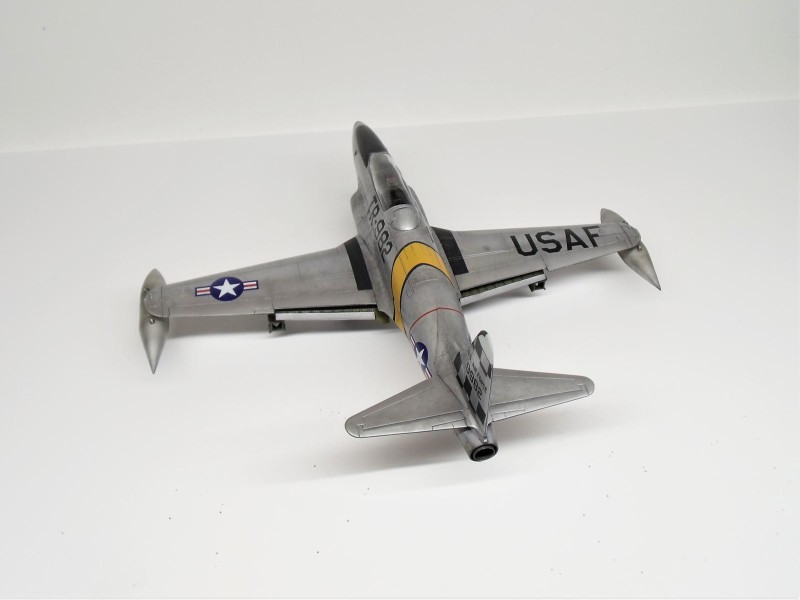
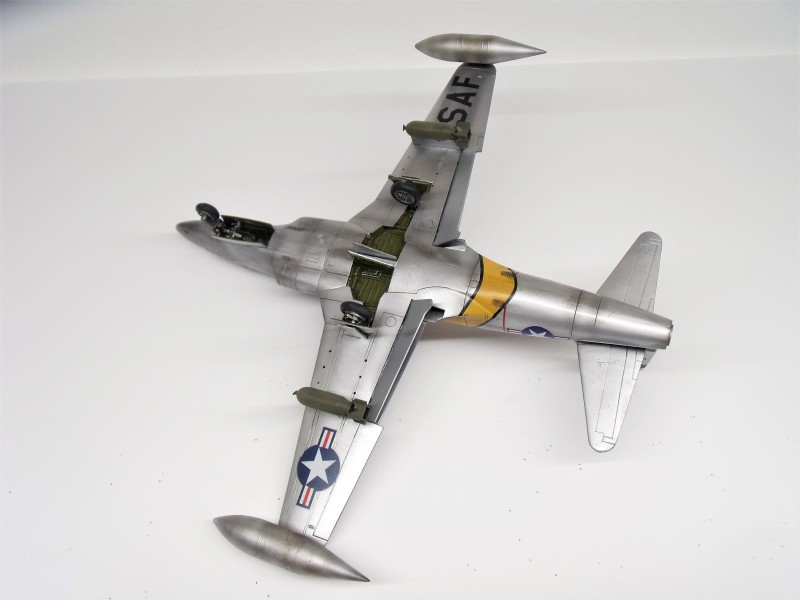
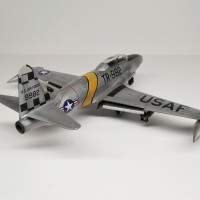
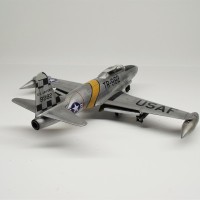
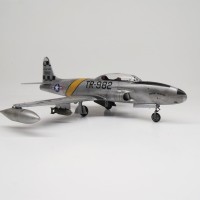
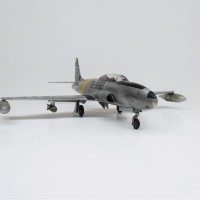

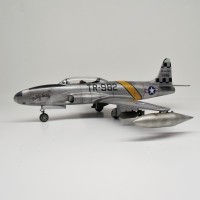
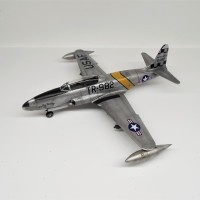
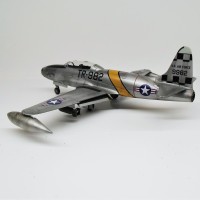
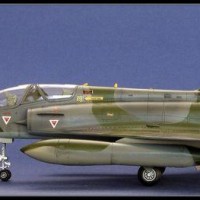
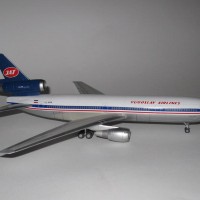
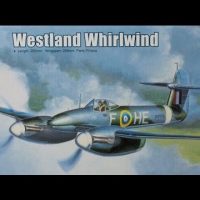
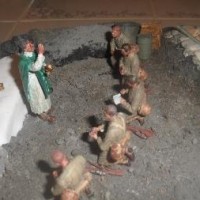
Very nice bird. I like the Vallejo Metallics as long as you treat them with repect
Thanks George, I've found that they are as durable as the primer you lay them on top of. A great, easy to use range that I enjoy using.
Well-done, Andrew.
Thanks, as usual Bob!
Excellent T-33, Andrew!
Loved the beefing-up with the Monogram F-80 parts, excellent painting and weathering!
What a great addition to our "Korean War" GB!
Well done!
Spiros, always appreciated. I saw the hint to use the F-80 parts on one of the other sites, but it was a bit more work getting the main wheel well to fit than I would have liked.
That is a great looking T-33, Well done!
Mr Torres, many thanks!
Nice looking result, Andrew.
Tom, thank you... as well as for the recommendation on the stripe.
Another amazing build, Andrew @pb_legend
Fantastic metal finish and weathering.
John, I'm glad you like the subtle weathering.
Great looking T-33, Andrew (@pb_legend). The planes looks terrific, especially your well-done metal finish.
George, thanks for the kind remarks.
Well done, Andrew. Great subject too.
John, I agree! I'd never seen a Korean War era T-33 before I saw this boxing. Thanks!
Very awesome looking T-bird. Your extra effort paid off on this nice jet. Always good to have a spare parts aircraft around to pick parts off of, just like in the “real world “ .
I wish sometimes that I would just pitch "past due" stuff, but then sometimes you can just make use of it... shoulder shrug
Great work! looks awesome.
Thanks!
Hmmm...I like that idea of sponging on additional layers of metallic paints to get a weathered metal effect! Just finished another Phantom and always looking to improve the look of the metal work on them. I'll use that idea! This is a great looking T-bird - well done!
Greg @gkittinger, you've got to be careful, and just sponging it on isn't enough, even more so in 1/72 I'd think. I dont think I got the look right, but it certainly looks more interesting to me. I was actually digging through your father's photos, looking at some of the F-86's and F-100's, trying to pick out how different aluminum looked in different reflected conditions. A great collection of photos that I'm happy he took and even more happy that he shared.
Looks great!
When I was a kid, my father came home from work with a T-33 manual (he was in the USAF). By the time he had to return the manual, I had practically memorized it from cover to cover. I still have a pretty good memory of the sequence for ejecting from the aircraft.
Greg, that is really neat! The T-33 was so widely used. Thanks for sharing your personal connection, and the kind comment! 🙂